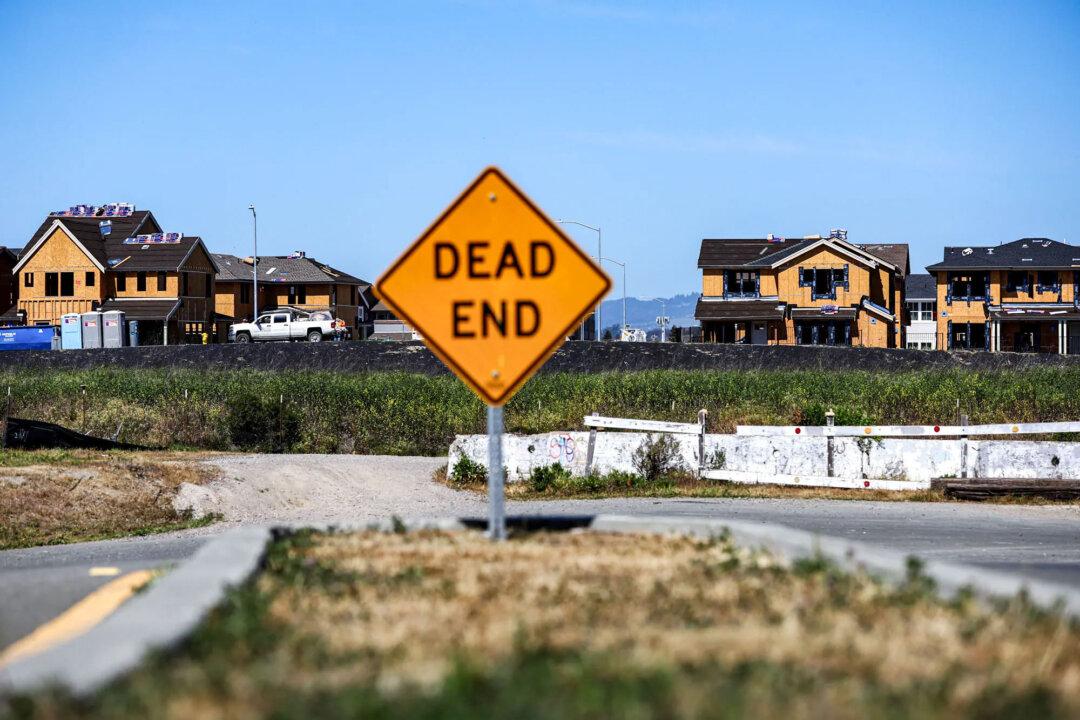Housing affordability, a significant worry for many voters, has emerged as a central theme in both major party presidential campaigns.
U.S. home prices are at an all-time high, and rents are fairly near the record high registered in 2022.
Over the past few years, the national real estate market has experienced a plethora of headwinds contributing to record price and mortgage payment rises, from limited housing inventory to the highest mortgage rates in more than two decades.
Trump’s Plan
Former President Donald Trump has talked about the housing affordability crisis, most notably in his speech at the Republican National Convention in July.“Starting on Day 1, we will drive down prices and make America affordable again. We have to make it affordable. It’s not affordable. People can’t live like this,” he said.
“Mortgage rates have quadrupled, and the fact is it doesn’t matter what they are because you can’t get the money anyway. Can’t buy houses. Young people can’t get any financing to buy a house. The total household costs have increased an average of $28,000 per family under this administration.”
When the Federal Reserve embarked upon an inflation-fighting crusade, the central bank raised the policy rate to a 23-year high. This led to higher Treasury yields, influencing the broader mortgage market.
The average 30-year mortgage rate peaked at 7.76 percent in November 2023. Since then, however, mortgage rates have come down slightly.

This is still much higher than the all-time low of 2.66 percent recorded in December 2020.
According to his campaign, the GOP presidential nominee could employ other measures to help new homebuyers, such as promoting homeownership through tax incentives, cutting “unnecessary regulations that raise housing costs,” and opening limited portions of federal lands to facilitate new home construction.
In March 2023, Trump promoted the idea of “freedom cities.”
“We’ll actually build new cities in our country again,“ he said in a four-minute video. ”These freedom cities will reopen the frontier, reignite American imagination, and give hundreds of thousands of young people and hardworking families a new shot at homeownership and, in fact, the American dream.”
According to the GOP platform, deporting millions of illegal immigrants could also boost supply and alleviate affordability issues.

Harris’s Plan
As part of her policy platform, Vice President Kamala Harris promised “to end the national housing supply crisis in her first term.”She proposes a plan that includes constructing 3 million affordable rental units and homes.
On the demand side, Harris would provide first-time homebuyers with up to $25,000 in down payment assistance. There would be “more generous support” for first-generation homeowners.
These plans were posted on the Harris campaign’s official website titled, “A New Way Forward” ahead of the first presidential debate.
Part of the vice president’s economic agenda is to “make rent more affordable and home ownership more attainable.”
“Vice President Harris knows that a home is more than a house—it represents financial security and an opportunity to build intergenerational wealth,” the campaign’s policy page reads. “But for too many Americans, homeownership is too far out of reach.”
Like Trump, the Democrat nominee aims to slash red tape to speed up the homebuilding process. However, the difference is that a potential Harris–Walz administration would punish companies that “hoard available homes to drive up prices for local homebuyers.”
Harris also said she would sign legislation to ban new forms of price fixing by corporate landlords.
“There’s a serious housing shortage in many places. It’s too difficult to build, and it’s driving prices up,” Harris said at an Aug. 23 rally in North Carolina. “I will work in partnership with industry to build the housing we need, both to rent and to buy. We will take down barriers and cut red tape, including at the state and local levels.”
The current administration has been on a housing policy blitz over the past few months, outlining new measures to tackle high costs.
President Joe Biden has supported a plethora of new tax credits.
One is a $10,000 refundable mortgage relief credit for first-time middle-income homebuyers. Another is a $10,000 tax credit for owners of starter homes who list their residential properties below the area’s median home prices. The White House has also touted tax credits to bolster new housing construction.

What Experts Are Saying
The chief reasons that housing affordability is the worst it has been in decades, according to a chorus of economists, are a shortage of homes, high mortgage rates, and decades of underbuilding.Economists offered a mixed assessment of the policy proposals of each candidate.
Mark Hamrick, a senior economic analyst at Bankrate, said there is no easy answer to the housing affordability crisis.
“One can’t snap one’s fingers and create housing supply,” he told The Epoch Times. “As interest rates retreat, we should see some better affordability conditions, but that will take time.”
A notable tactic that Harris has outlined is $25,000 in down payment assistance.
Howard Husock, the senior fellow of domestic policy studies at the American Enterprise Institute (AEI), said he believes that at a time when the housing market is already on fire, the down payment assistance would likely add to the affordability crisis.
Another policy proposal from the Harris camp that Hamrick said might backfire concerns rent caps, as they “would constrain landlords from bringing more supply to market.”
At her first major rally in August, Harris vowed to “take on corporate landlords and cap unfair rent increases” by limiting rent increases to 5 percent for two years for landlords with more than 50 units.
This idea is built on the current administration’s efforts to eliminate depreciation write-offs for large landlords unless they agree to not raise rent by more than 5 percent annually for two years.
Chen Zhao, an economist at Redfin, assessed some of Trump’s housing policy measures.
“Donald Trump has said he wants to lower mortgage rates and loosen building regulations, which would make homes more affordable and increase supply,” she said.
“Several of his other stances would also impact housing affordability; for instance, his policies could slow immigration—which would slow homebuilding—and increase tariffs, which would result in higher rates.”
However, according to Hamrick, Trump’s idea of lowering the corporate tax rate to 15 percent might stimulate housing activity, bolster investment, and lead to increased housing market activity.

Carl Harris, chairman of the NAHB, lauded the vice president for calling for the construction of 3 million new housing units. While he supported tax credits to build more entry-level housing, the industry expert says they need to be targeted to local markets.
“A $10,000 tax credit for first-time buyers and $25,000 down payment assistance are positive demand incentives but the plan must weigh more heavily on boosting supply because the nation faces a shortfall of roughly 1.5 million housing units,” he said in a statement.
Looking ahead, market observers anticipate decelerating growth in home prices.

“Strong home price appreciation has persisted despite purchase affordability remaining stretched for the vast majority of consumers, a dynamic that is still primarily a function of inadequate supply,” said Mark Palim, deputy chief economist and vice president at Fannie Mae.
Both candidates want to address local zoning laws, but this could be a Herculean hurdle to overcome, according to one expert.
Although significant reforms are on the table, the issues surrounding zoning and land-use regulations are complex, according to Vanessa Brown Calder, director of opportunity and family policy studies at the Cato Institute.
“You can simply restrict housing in a different way with a different lever and basically totally undo whatever reform you made.”
Federal lands reform would help from the housing affordability perspective, she said. However, many of the policy proposals from both the Harris and Trump campaigns have been too short on details to accurately measure how much they would restore affordability, according to Calder.
Proposing solutions during the election campaign is expected, but trying to muster support in Congress might be a difficult hurdle to overcome, Hamrick said.
“Ultimately, the housing market’s challenges are related to a mismatch of supply and demand, coupled with affordability challenges,” he said. “Anything that attempts to spur ownership will only lean more on supply challenges.”









